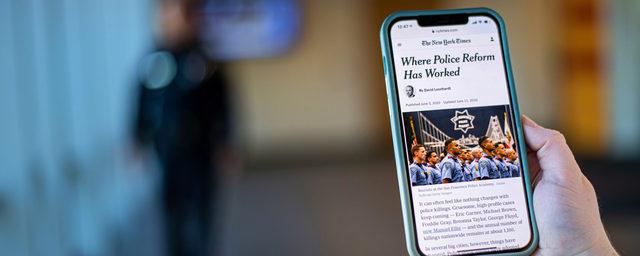A Model for Reform
The San Francisco Police Department has undergone extensive reform efforts that have made the department a national model of 21st-century policing.
The SFPD's Collaborative Reform Initiative (or CRI) was launched in 2016. The department was found to be "substantially compliant" by the state Department of Justice in 2025.
Collaborative Reform Initiatives
In 2015 and 2016, the San Francisco Police Department faced mounting public criticism over a series of high-profile officer-involved shootings. Together with then-Supervisors London Breed and Malia Cohen, Mayor Ed Lee and SFPD in 2016 asked the U.S. Department of Justice for a voluntary, top-to-bottom review of the San Francisco Police Department’s practices. Our request of the U.S. DOJ sought “answers about how as a Police Department and a City we can build deeper, stronger trust between law enforcement and the communities they’re sworn to protect.”
In October 2016, the U.S. DOJ’s COPS office (for “Community Oriented Policing Services”) released the most comprehensive independent assessment of the San Francisco Police Department in city history. The 432-page report identified five areas of improvement in line with the principles of President Obama’s Task Force on 21st Century policing.
- Use of Force Reforms (23 findings and 58 recommendations)
- Bias Reforms (14 findings and 54 recommendations)
- Community Policing Reforms (17 findings and 60 recommendations)
- Accountability Reforms (26 findings and 68 recommendations)
- Recruitment, Hiring and Personnel Reforms (14 findings and 32 recommendations)
In total, the U.S. DOJ made 94 findings and 272 recommendations for improvement, adding…
“If the SFPD does so – with sustained diligence and in good faith – it will become a model policing agency in this country.”
After a productive start on CRI, however, in 2017 then-U.S. Attorney General Jeff Sessions ended the U.S. DOJ’s participation in collaborative reform partnerships. The San Francisco Police Department was alone among major city police departments nationwide to reinvent the transformative program as a voluntary state-level collaboration — making good on its commitment to the diverse communities it serves.
Since 2018, SFPD has worked in partnership with the California Department of Justice — led by then-Attorney General Xavier Becerra — together with Hillard Heintze, a leading global change management consultancy, to implement the 272 recommendations and nearly 1,000 associated compliance measures.
Closing the Loop
On January 7th, 2025, the California Department of Justice announced that the SFPD was in substantial compliance with its Collaborative Reform Initiative agreement with the State. The accomplishments demonstrate SFPD as a national model for policing in the 21st century, showing that reform efforts build community trust, which improves public safety.
As the SFPD closes out this phase of an 8-year-long reform process, crime is down significantly in every category thanks to our hard-working officers and growing support from the public.
“Today marks a significant milestone for the SFPD and for the future of policing,” said Chief Bill Scott. “Crime has reached historic lows thanks to our hard-working officers and our work to build community relationships through our reform efforts. I want to thank the California Department of Justice and Jensen Hughes for their partnership in this work. The SFPD will continue to make our city safer as we stand as a model for 21st Century Policing for the nation. I want to thank our officers who continue to police San Francisco with dignity and respect. This is an ongoing effort that we will sustain for years to come.”
Moving Forward
Hailed by the New York Times in 2020 as a major city department “where police reform has worked,” the San Francisco Police Department’s commitment to top-to-bottom reform endures as an ongoing department-wide effort.
